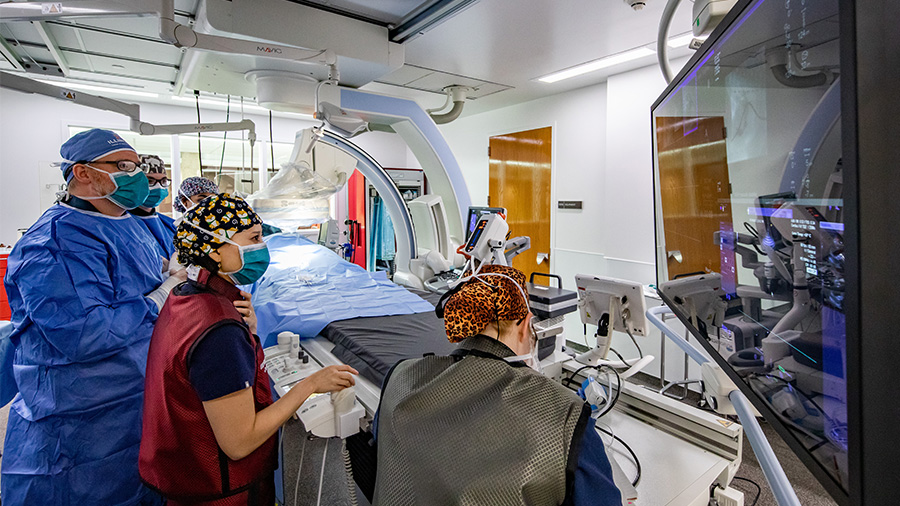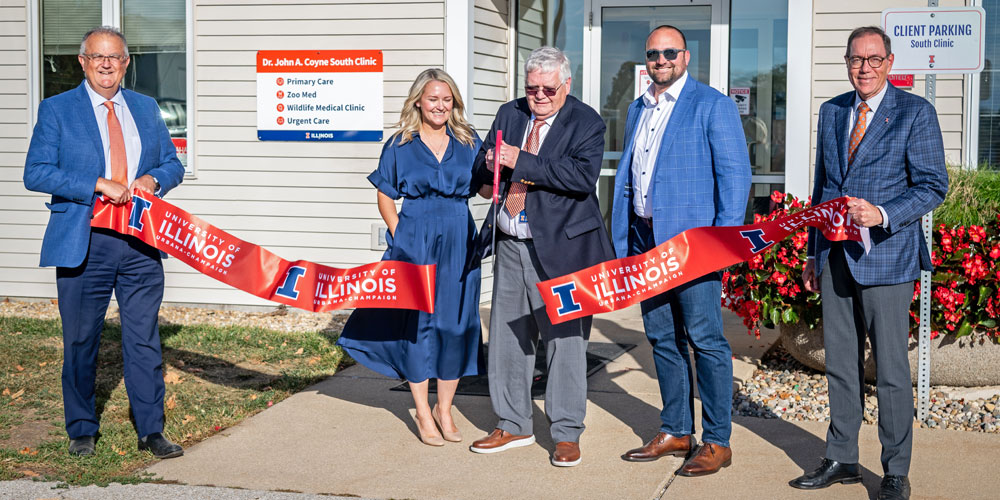The University of Illinois is ushering in a new era in veterinary cardiology.
“For most of its history, veterinary cardiology has been a specialty focused on diagnostics and medical management,” said Dr. Ryan Fries, who has led the Veterinary Teaching Hospital’s cardiology service since 2014.
“But what used to be impossible is now possible. We’re no longer limited to primarily one approach.”
Over the past two years, Dr. Fries and his colleagues have performed more than 40 interventional procedures to repair diseased heart valves in dogs. Chronic valvular disease is a life-limiting condition that affects as much as 7% of older dogs.

First TEER Patient
Murphy was 10 years old when he came to see the cardiology service in 2022. His veterinarian had made the referral after determining that Murphy’s recent bouts of rapid breathing related to a heart condition.
“The U. of I. cardiologists told us that Murphy had mitral valve regurgitation and was in congestive heart failure,” recalled Murphy’s human dad, Arik, of that first visit. That devastating news, however, came with a ray of hope.
“Because he was very healthy otherwise, they said Murphy might be a great candidate for a new procedure that could add years to his life.”
The new procedure, called transcatheter edge-to-edge mitral valve repair (TEER), had first been performed successfully on a dog in China in January 2020. This breakthrough treatment arose through a partnership between veterinary cardiologists from Colorado State University and a Chinese medical technology company.
By 2022, the Illinois cardiology team had been trained on the TEER procedure at the Colorado facility but had not yet performed one at their own hospital.
‘Four Seconds to Say Yes’
At their second visit to U. of I., Arik and his wife Ashlee learned that Murphy met the criteria for the TEER procedure. Even knowing that Murphy would be the first TEER patient at Illinois, they trusted the cardiology team.
“It took about four seconds for us to say yes,” said Arik. “We felt it would be a good outcome either way. The learning that would be gained at the teaching hospital would give the experience value even if Murphy’s procedure was not successful.”
Murphy’s TEER procedure took place a few months later, in September 2022.
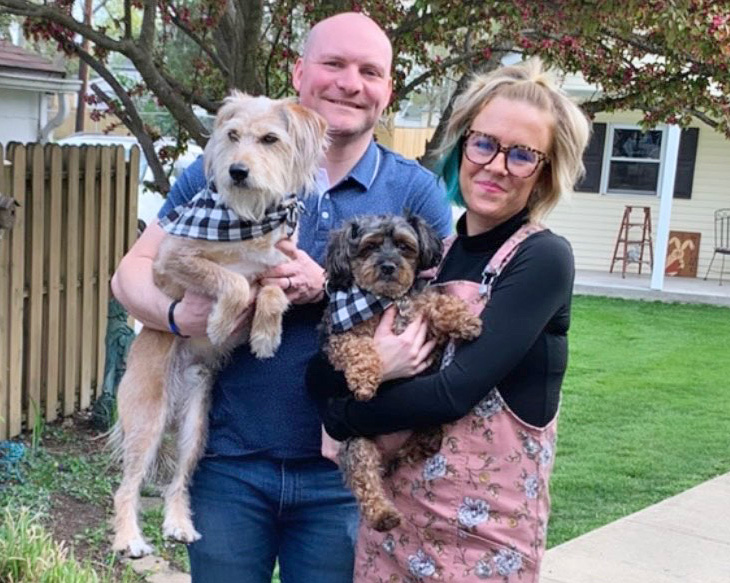
“After he got home, he was groggy for a couple of days,” reported Ashlee. “But within a week he was playing. We saw a difference immediately.
“Today, his heart is back to normal size, though he is still taking heart medications.”
Chronic Valvular Disease and TEER
Until recently, medical management aimed at slowing progression of the disease was the only treatment for chronic valvular disease. Unfortunately, the majority of dogs treated with medications do not live beyond two years after diagnosis. When the condition progresses to congestive heart failure, median survival time is 9 to 12 months.
Open heart surgery for mitral valve repair in small dogs has been practiced for the past two decades, but very few facilities offer it and very few pet owners can afford it.
The introduction of TEER changed the outlook for these patients. The TEER procedure is performed under general anesthesia. A surgeon makes a two- to three-inch incision in the chest wall. Then a cardiologist places a device called the V-Clamp into the mitral valve of the beating heart, guided by real-time imaging.

Team Approach
“It takes two skill sets to enable these novel procedures that advance the possibilities of veterinary cardiology,” Dr. Fries stated.
The hospital’s “heart team” unites the expertise of boarded veterinary cardiologists Drs. Saki Kadotani and Fries with the surgical acumen of Dr. Clara Moran. Together, they perform interventional procedures that are in many cases curative of heart disease.
“My main role on the team is to perform a thoracotomy, basically creating the port that gives the cardiologists access to the heart,” said Dr. Moran, a boarded surgeon who joined the Illinois faculty in 2018. “Then I close the incision after the cardiologists have finished.”
Dr. Moran also advises on pain management and caring for the chest tube post-surgery, while the cardiologists manage the other aspects of continued patient care.
“I really enjoy doing these cases,” she added. “There’s something about touching a beating heart that never gets old.”
Meet the Heart Team
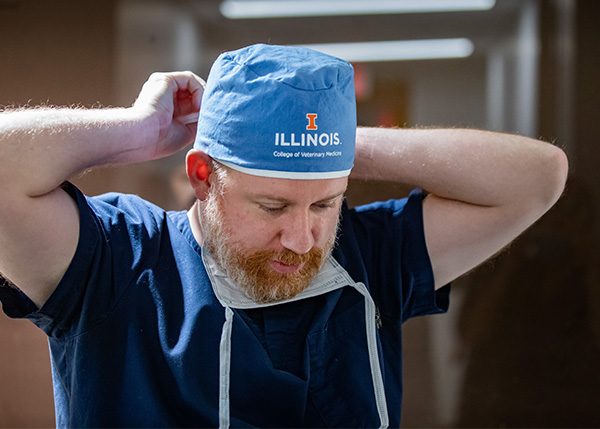
Dr. Ryan Fries, a boarded veterinary cardiologist, has led the Veterinary Teaching Hospital’s cardiology service since 2014.
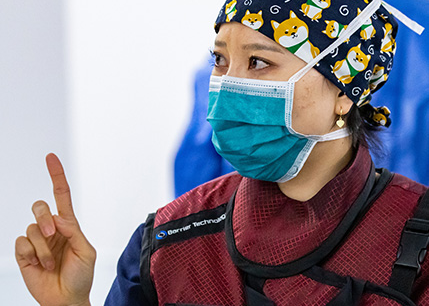
Veterinary cardiologist Dr. Saki Kadotani completed her residency with Dr. Fries in 2019 and stayed on as faculty.
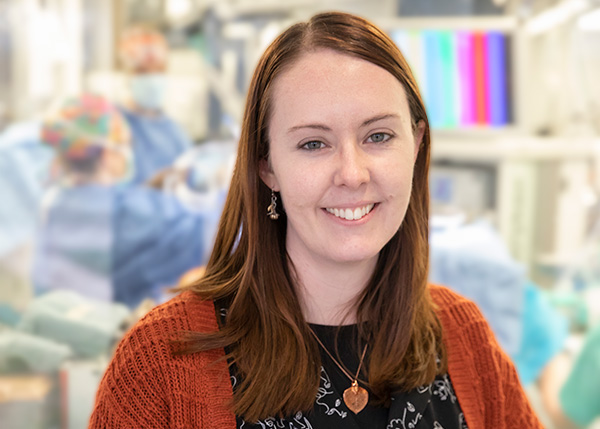
Dr. Clara Moran, a boarded surgeon, opens and closes the patients’ chest cavity to give the cardiologists access to the heart.
Top ‘TEER’
The University of Illinois became the second veterinary facility in the U.S. to offer the TEER procedure. Our cardiologists continue to pioneer this treatment option for structural valve disease in dogs.
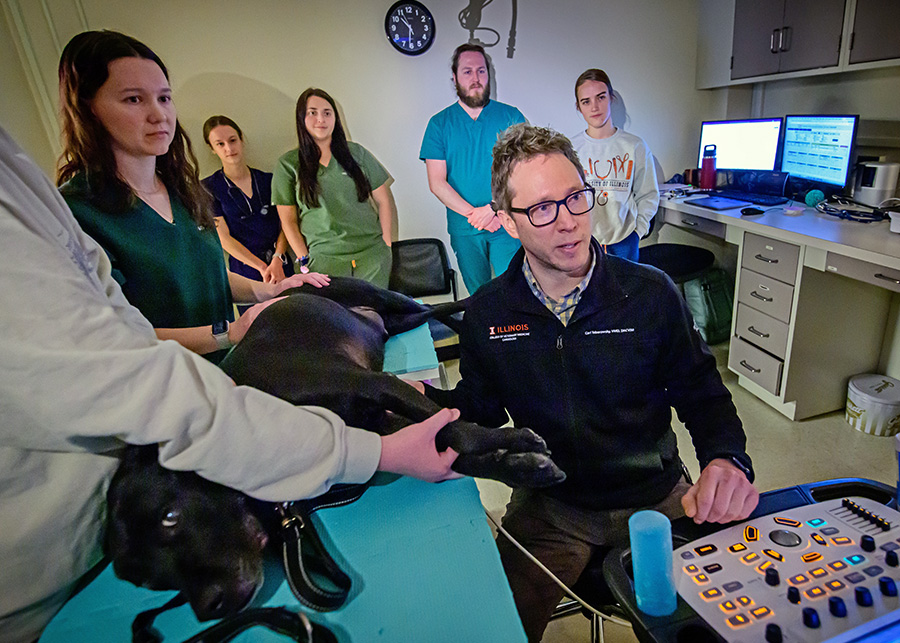
“Every week we get between five and ten inquiries about doing the procedure,” said Dr. Fries. “All cases are reviewed to see if the patient is eligible. Of those who are eligible, most owners choose to go ahead with the procedure.”
“If we had more surgeons, we could do more,” Dr. Fries noted. The cardiology service, with three boarded faculty members—Drs. Fries, Kadotani, and Carl Toborowsky—as well as three residents and a specialty intern, sees hundreds of patients a year, treating a wide range of heart conditions.
Patients have come from Washington, California, New York, Florida, Massachusetts, and even other countries. Presently, the heart team has the capacity to perform four TEER procedures a month. Their calendar is booked out three months ahead.
Other Heart Team Procedures
“Working with Dr. Moran in the interventional OR has made other procedures possible, including for cats,” explained Dr. Fries. “Their small size has been a roadblock to advancing cardiology for cats. However, by combining cardiology and surgery, we have treated six or so cats in the new OR.”
A 9,000 sq. ft. small animal surgical wing completed in 2021 opened the door to offering new treatments at the Veterinary Teaching Hospital. One of its eight operating rooms is equipped with advanced imaging technology that provides real-time visualization of minimally invasive procedures like TEER. (See feature image at the top of the page.)
Dr. Moran recalled that her first collaboration with the cardiology service was a cor triatriatum sinister in a cat. In this rare condition, the cat was born with a thin membrane that divided the left atrium of its heart into two chambers.
A New Era for Veterinary Cardiology
“Dr. Kadotani has a veterinary colleague in Japan who has been performing open heart surgeries for many years with excellent outcomes,” said Dr. Fries. “He and his team have expressed interest in coming to the U.S. to help train people here on the procedure.”
Dr. Fries envisions a day when the University of Illinois offers open heart surgery, perhaps in a new cardiology wing of the hospital. He has already seen a tremendous shift in what is possible.
“For generations of veterinarians, chronic valvular disease was addressed only through medications,” he said. “New generations of DVMs are being trained to think about this disease having a surgical solution. Here at Illinois, our students see it as routine. ‘Another TEER. Ho-hum.’ ”
Meet Fergie: TEER Patient #2
Angela tells the story of her dog’s TEER experience. Fergie was 10 when she underwent the TEER operation in September 2022.
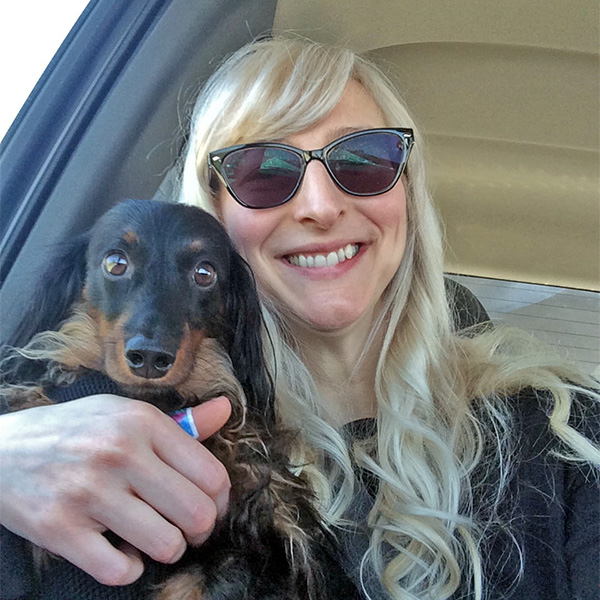
Fergie’s journey with heart disease began when she was around 7 years old. Our primary veterinarian, Dr. Suzanne Harshbarger of Knoxville Veterinary Service, detected a heart murmur and, although it wasn’t a major concern at the time, referred us to the cardiology team at the University of Illinois Veterinary Teaching Hospital for further evaluation.
Initially, Fergie’s condition was diagnosed as having chronic valvular disease and associated heart enlargement. She was prescribed pimobendan twice a day to help manage it. Later that was increased to three times a day, and eventually furosemide was added to her medications.
But even with more meds her health began to decline. She became lethargic, sleeping much more than usual, and we could see her spark fading. I prayed fervently—Fergie was the first dog my husband and I got together, and we weren’t ready to say goodbye so soon.
So when Dr. Kadotani left a voice message letting us know the TEER procedure might be a good fit for Fergie, I knew right then it was an answer to my prayer. We decided to move forward with the procedure, choosing the second spot over the first.
After the surgery, it took some time for Fergie to bounce back, but once she did, it was like we had our puppy back! She had so much energy and mischief in her again—proudly parading around with socks and paper, demanding that we chase her around the house to retrieve them. We could hardly keep up!
We feel incredibly blessed to have more time with Fergie, and every moment with her now is a gift. Fergie’s journey has been challenging, but we are so grateful for the expertise and care she received and continues to receive from the cardiology team.
Thanks to the TEER procedure, she’s living her best life.

